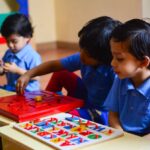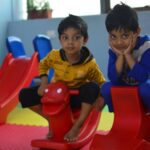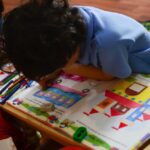
How to help children learn through PLAY ?
The buzz all around about PLAY and its impact on children’s learning has never been so high. The fact that an early childhood learning space is called a playschool is not without a scientific reason. Researchers and educators agree alike:
“PLAY is the highest form of RESEARCH” – Albert Einstein
Powerful benefits of play:
- It teaches children to thrive in different environments and social settings.
- It allows them to make their own discoveries and acquire knowledge through experience and involvement of all senses.
- It is an opportunity to practice what they are learning and repetition helps in reinforcement.
Few examples of how children learn through play:
- Pretend play helps in developing speech, listening skills, handling range of social scenarios and working with numbers. Pretend play like going to the doctor, they learn about waiting for their turn, sequence of events, caring for others and may be writing a prescription. It gives parents a chance to expose children to more complex words.
- Outdoor play helps in gross-motor skills, dexterity and hand-eye coordination. They run, jump and climb which helps release the high level of energy children have within. Going down a slide or climbing up a frame boosts confidence, learn risk-taking and improve physical strength and control.
- Playing with blocks and balancing toys increases concentration and creativity. It also advances fine-motor movement and spatial awareness as they move and arrange blocks.
We adults have to trust ourselves, find some time for our children, remember how we played and enjoyed during our childhood and hit outdoors as often as possible. Listen to their ideas carefully and play spontaneously. Be ready to respond to a lot of WHYs and be enthusiastic about looking for a few unknown ones too. And we always like to quote:
“Don’t limit a child to your own learning, for he was born in another time.” – Rabindranath Tagore











